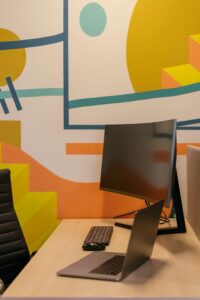
You have often heard that the internet has changed present-day life. Connecting with friends and family or buying groceries and resources also changed how you access health care information.
Not long ago, we have seen the advancing acceptance of new and creative tools to maintain patients’ health. Thanks to technological innovations, there is no need for in-person appointments for healthcare. Concerning the medical industry, telehealth is the facility that delivers online appointments.
Telehealth came in handy during the era of the coronavirus pandemic, and many people benefited from telehealth. People still use telehealth due to the advantages it provides. For instance, convenience, saving time, less risk of getting infected, etc.
Telehealth is beneficial and has reduced many issues that stop patients from getting the necessary treatment. Though this health care service is growing and becoming famous, some disadvantages still need attention. We have listed some advantages and disadvantages that you must know before trying this healthcare service.
What is telehealth?

Telehealth uses online data and communication technologies to access medical services virtually and maintain the patient’s health. You can use this technology while sitting at home, which requires intelligent devices and a stable internet connection to provide a good telehealth session.
Telehealth is a technology that observes, cures, and provides treatment to patients virtually. It includes video conferencing, monitoring patients virtually, virtual data platforms, etc. Thanks to this technology, doctors can connect with patients effectively.
Advantages
Telehealth is an excellent choice if you don’t want to attend the clinic in person. Also, it delivers a flexible way of giving and getting treatment that makes it convenient for you and the doctor. Now, let’s look at the advantages and why telehealth is growing and becoming famous.
Provide Aid to Rural Regions

Picture from pixabay
The main reason why telehealth is growing to a greater extent is due to a decrease in conventional access to medical care in rural areas. First, they must travel far with fewer or no transport options. And second, there are fewer doctors in these rural regions, which makes it hard for the rural people to get proper treatment.
But telehealth allowed them to connect with doctors virtually on a different level. If a rural person does not find the service they want in their region, they can use telehealth services to connect with a doctor online. Now they don’t have to travel for hours. Instead, they have to use their phone with a running internet connection and get the treatment they want.
Reduce costs for both doctors and patients
Telehealth services are less costly compared to in-person visits. According to a survey, in-person visits are around 3-4 times more expensive than virtual visits. Along with cutting the cost, it also saves the time you spend while physically traveling to the clinic.
It also helps in reducing high-cost services on the doctor’s side. For instance, emergency services are way too expensive. Suppose you require an emergency medical service. Then it is more likely that you will use an ambulance to visit the hospital. An ambulance is a great option, but you don’t know how expensive it is. The cost of riding an ambulance varies accordingly. The treatment you will get and the miles you have covered reaching the hospital are a few factors on which the price depends.
But with the help of telehealth, you can seek doctors’ advice before looking for emergency services. It will help eliminate impulsive decisions to visit the clinics when your issues can be resolved by the doctor virtually.
Better Results
The capability to treat the patients virtually advances the treatments and improves the satisfaction rate. 90% of patients rate their telehealth experience as positive, as it helps them avoid frequent hospital visits. The increase in online participation provides satisfaction to patients and doctors.
With the help of telehealth services, it is easy for patients to quickly get in touch with their doctors to get the counseling they want if they have a query or want to get more information about their treatment. Set a virtual appointment with your doctor instead of a physical one.
Saves the time
Virtual visits cost you less than in-person visits, and In-person visits take more time due to various factors. According to a survey, it was found that it costs you around 2 hours if you visit a hospital physically.
A typical in-person visit includes an average of 40 minutes spent traveling, 60 minutes filling out the form, and 20 minutes with the doctor. Traveling can consume more time if you are from a rural region or rely on public transport.
Virtual visits cost you less time as they don’t require travel. And it lets you fill out the form online, which you can do hours before your appointment. It also doesn’t let you wait for too long. If it takes time, you can do something productive while you wait.
Reduces the Spread of infection

Telehealth is an excellent way to limit infection spreading as it does not require in-person visits. Due to virtual appointments, you will not be exposed to each other, thus eliminating the chances of passing the infection.
It proved extremely helpful during the coronavirus pandemic when hospitals were forced to restrict in-person visits to reduce the spread of the virus.
Telehealth is helpful for you if you have a low immune system and lets you get treated safely without risking your health.
Disadvantages
We know that everything that has advantages also has some downfalls. Telehealth is thrilling to many, but some people are concerned about its gaining popularity. The significant concerns to most clinics are the cost of equipment, lack of data security, fewer physical interactions, etc. So, let’s look at some of the disadvantages that telehealth provides.
Cost of initial setup

Initial setup can be costly if your clinic doesn’t have essential IT support. As telehealth allows various virtual services like video appointments and aftercare, setting up of IT infrastructure can be expensive.
But in the long run, telehealth has proved to be a more cost-efficient alternative to in-person visits. It saves both time and money for both patients and doctors by flexibly managing consultation and follow-up routines.
Demands a good Internet Connection
Telehealth needs a good internet connection as most appointments happen visually instead of the call. Many people still don’t use the internet, which could be a significant issue. Telehealth services require a good connection that everyone might not have.
Suppose you are in the middle of a virtual appointment and suddenly lose your connection. Or it could be possible that your doctor doesn’t have a stable internet connection. Then, in this case, your visit stops, leading to extending or even delaying the visit.
Works only on Smart Devices
Smart devices are as important as a good internet connection to support telehealth services.
The patient and the doctor should have an intelligent device for telehealth services.
Many people are unable to afford a smartphone. Therefore it is hard for them to access telehealth services. So it implies that a patient should buy or borrow a smartphone to use telehealth services.
Data Security
Telehealth is risky in terms of data security. Conducting virtual appointments risks your information as online data can be hacked easily, and a hacker can easily access your medical records by hacking your account.
The clinicians should give special attention to this matter and keep the patient data safe and secure in the same manner as they do during the physical visits. It may need some special safety standards, but it must provide security to patient information.
LACK OF PHYSICAL INTERACTION

Telehealth allows patients to easily book their appointments online and let them have excellent video calls with their doctors and many more. However, some patients prefer to have in-person visits, and some situations can not be cured without a proper physical check-up and need an in-person visit.
Naturally, some people prefer in-person visits. But to those who want to save their time and cost and avoid getting infected, telehealth is a great way to go.
FAQs
- Why is telehealth important in Covid?
Telehealth proved to be a great way to address rural populations that don’t have much access to medical care. During the pandemic, telehealth is used to observe patients who recovered from coronavirus disease after hospital discharge.
- Who benefits the most from telehealth?
Many people get benefitted from telehealth services. For instance, people living in rural regions have limited access to healthcare. And also, transgender people, working professionals, and low immunity people get benefitted from telehealth.
- Is telehealth as effective as in person?
In certain circumstances, telehealth is proved to be as efficient as an in-person visit. If the case is not severe, telehealth can become the best option for a patient. The only things required for a practical telehealth session are a smart device and a good internet connection.
- Why is telehealth the future?
Telehealth is gaining popularity day by day as it does not require you to have in-person visits to the hospitals. Many hospitals and clinics are adopting this new technology as it is becoming popular. Telehealth saved both cost and time and reached the population with limited access to medical care.
- What is the difference between telehealth and telemedicine?
In simple language, telemedicine is the subset of telehealth. Telehealth applies to distant non-clinical services, whereas telemedicine applies to remote clinical services.
The bottom line
Telehealth is an emerging technology that has benefitted both patients and doctors. Being convenient, cost-efficient, and easily accessible makes it an attractive choice for patients and doctors. Despite its many advantages, it has some disadvantages that some people are concerned about.
But according to many health specialists, the advantages are much more significant than the disadvantages. Specialists are coming up with solutions to these disadvantages to make them beneficial.
Telehealth is a central component in the current healthcare world. And it will probably become a well-accepted technique for managing medical care.





